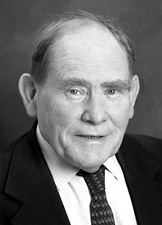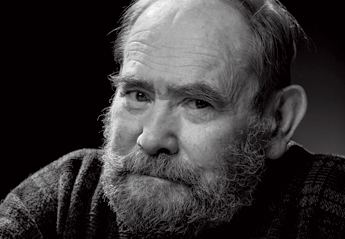Nationality South African Role Researcher Name Sydney Brenner | Influenced by Frederick Sanger | |
 | ||
Institutions University of the WitwatersrandUniversity of CambridgeUniversity of California, BerkeleyMolecular Sciences InstituteScripps Research InstituteSalk Institute for Biological StudiesHoward Hughes Medical InstituteLaboratory of Molecular Biology Thesis The physical chemistry of cell processes: a study of bacteriophage resistance in Escherichia coli, strain B (1954) Books Complex Genetic Programmes Parents Lena Brenner, Morris Brenner Similar People John Sulston, H Robert Horvitz, Seymour Benzer, Francis Crick, Charles Yanofsky | ||
Doctoral advisor Cyril Hinshelwood | ||
Sydney brenner part 2 of 2
Sydney Brenner CH FRS FMedSci (born 13 January 1927) is a South African biologist and a 2002 Nobel prize in Physiology or Medicine laureate, shared with Bob Horvitz and John Sulston. Brenner made significant contributions to work on the genetic code, and other areas of molecular biology while working in the Medical Research Council (MRC) Laboratory of Molecular Biology in Cambridge, England. He established the roundworm Caenorhabditis elegans as a model organism for the investigation of developmental biology, and founded the Molecular Sciences Institute in Berkeley, California, U.S..
Contents
- Sydney brenner part 2 of 2
- Sydney brenner
- Education and early life
- Career and research
- American plan and European plan
- Awards and honours
- Personal life
- References

Sydney brenner
Education and early life

Brenner was born in the town of Germiston, Gauteng, South Africa. His parents, Lena (née Blecher) and Morris Brenner, were Jewish immigrants. His father, a cobbler, came to South Africa from Lithuania in 1910, and his mother from Riga, Latvia, in 1922. He has one sibling, a sister, Phyllis.
He was educated at Germiston High School and the University of the Witwatersrand. Having completed the first three years of primary school in one year, it was noted then that he would be too young to qualify for the practice of medicine at the conclusion of his degree, and he was therefore allowed to complete a BSc degree in Anatomy and Physiology. He stayed on for two more years doing an Honours degree and then an MSc degree, supporting himself by working part-time as a laboratory technician. During this time he was taught by Joel Mandelstam, Raymond Dart and Robert Broom. His master thesis was in the field of cytogenetics. In 1951 he received the MBBCh degree.
Brenner received an 1851 Exhibition Scholarship from the Royal Commission for the Exhibition of 1851 which enabled him to complete a Doctor of Philosophy (DPhil) degree at the University of Oxford as a postgraduate student of Exeter College, Oxford supervised by Cyril Hinshelwood.
Career and research
Following his PhD, Brenner did postdoctoral research at the University of California, Berkeley. He spent the next 20 years at the Laboratory of Molecular Biology in Cambridge; here, during the 1960s, he contributed to molecular biology, then an emerging field. In 1976 he joined the Salk Institute in California.
Together with Jack Dunitz, Dorothy Hodgkin, Leslie Orgel, and Beryl M. Oughton, he was one of the first people in April 1953 to see the model of the structure of DNA, constructed by Francis Crick and James Watson; at the time he and the other scientists were working at the University of Oxford's Chemistry Department. All were impressed by the new DNA model, especially Brenner who subsequently worked with Crick in the Cavendish Laboratory at the University of Cambridge and the newly opened Laboratory of Molecular Biology. According to the late Beryl Oughton, later Rimmer, they all travelled together in two cars once Dorothy Hodgkin announced to them that they were off to Cambridge to see the model of the structure of DNA.
Brenner made several seminal contributions to the emerging field of molecular biology in the 1960s (see Phage group). The first was to prove that all overlapping genetic coding sequences were impossible. This insight separated the coding function from structural constraints as proposed in a clever code by George Gamow. This led Francis Crick to propose the concept of the adaptor or as it is now known "transfer RNA (tRNA)". The physical separation between the anticodon and the amino acid on a tRNA is the basis for the unidirectional flow of information in coded biological systems. This is commonly known as the central dogma of molecular biology i.e. that information flows from nucleic acid to protein and never from protein to nucleic acid. Following this adaptor insight, Brenner proposed the concept of a messenger RNA, based on correctly interpreting the work of Elliot "Ken" Volkin and Larry Astrachan. Then, with Francis Crick, Leslie Barnett and Richard J. Watts-Tobin, Brenner genetically demonstrated the triplet nature of the code of protein translation through the Crick, Brenner, Barnett, Watts-Tobin et al. experiment of 1961, which discovered frameshift mutations. This insight provided early elucidation of the nature of the genetic code. Leslie Barnett helped set up Sydney Brenner's laboratory in Singapore, many years later.
Brenner, with George Pieczenik, created the first computer matrix analysis of nucleic acids using TRAC, which Brenner continues to use. Crick, Brenner, Klug and Pieczenik returned to their early work on deciphering the genetic code with a pioneering paper on the origin of protein synthesis, where constraints on mRNA and tRNA co-evolved allowing for a five-base interaction with a flip of the anticodon loop, and thereby creating a triplet code translating system without requiring a ribosome. This model requires a partially overlapping code. This is the only published paper in scientific history with three independent Nobel laureates collaborating as authors.
Brenner then focused on establishing Caenorhabditis elegans as a model organism for the investigation of animal development including neural development. Brenner chose this 1-millimeter-long soil roundworm mainly because it is simple, is easy to grow in bulk populations, and turned out to be quite convenient for genetic analysis. One of the key methods for identifying important function genes was the screen for roundworms that had some functional defect, such as being uncoordinated, leading to the identification of new sets of proteins, such as the set of UNC proteins. For this work, he shared the 2002 Nobel Prize in Physiology or Medicine with H. Robert Horvitz and John Sulston. The title of his Nobel lecture on December 2002, "Nature's Gift to Science," is a homage to this modest nematode; in it, he considered that having chosen the right organism turned out to be as important as having addressed the right problems to work on.
Brenner founded the Molecular Sciences Institute in Berkeley, California in 1996. As of 2015 he is associated with the Salk Institute, the Institute of Molecular and Cell Biology, the Singapore Biomedical Research Council, the Janelia Farm Research Campus, and the Howard Hughes Medical Institute. In August 2005, Brenner was appointed president of the Okinawa Institute of Science and Technology. He is also on the Board of Scientific Governors at The Scripps Research Institute, as well as being Professor of Genetics there. A scientific biography of Brenner was written by Errol Friedberg in the US, for publication by Cold Spring Harbor Laboratory Press in 2010.
Known for his penetrating scientific insight and acerbic wit, Brenner, for many years, authored a regular column ("Loose Ends") in the journal Current Biology. This column was so popular that "Loose ends from Current Biology", a compilation, was published by Current Biology Ltd. and is now a collectors' item. Brenner wrote "A Life In Science", a paperback published by BioMed Central. Brenner is also noted for his generosity with ideas and the great number of students and colleagues his ideas have stimulated.
American plan and European plan
The "American plan" and "European Plan" were proposed by Sydney Brenner as competing models for the way brain cells determine their neural functions. According to the European plan (sometimes referred to as the British plan), the function of cells is determined by its genetic lineage. Therefore, a mother cell with a specific function (for instance, interpreting visual information) would create daughter cells with similar functions.
According to the American plan, a brain cell's function is determined by the function of its neighbors after cell migration. If a cell migrates to an area in the visual cortex, the cell will adopt the function of its neighboring visual cortex cells, guided by chemical and axonal signals from these cells. If the same cell migrates to the auditory cortex, it would develop functions related to hearing, regardless of its genetic lineage.
Awards and honours
Brenner has received numerous awards and honours including:
Personal life
Brenner was married to May Brenner (née Covitz, subsequently Balkind) from December 1952 until her death in January 2010; their children include Belinda, Carla, Stefan, and his stepson Jonathan Balkind from his wife's first marriage. He lives in Ely, Cambridgeshire. He is an atheist.
